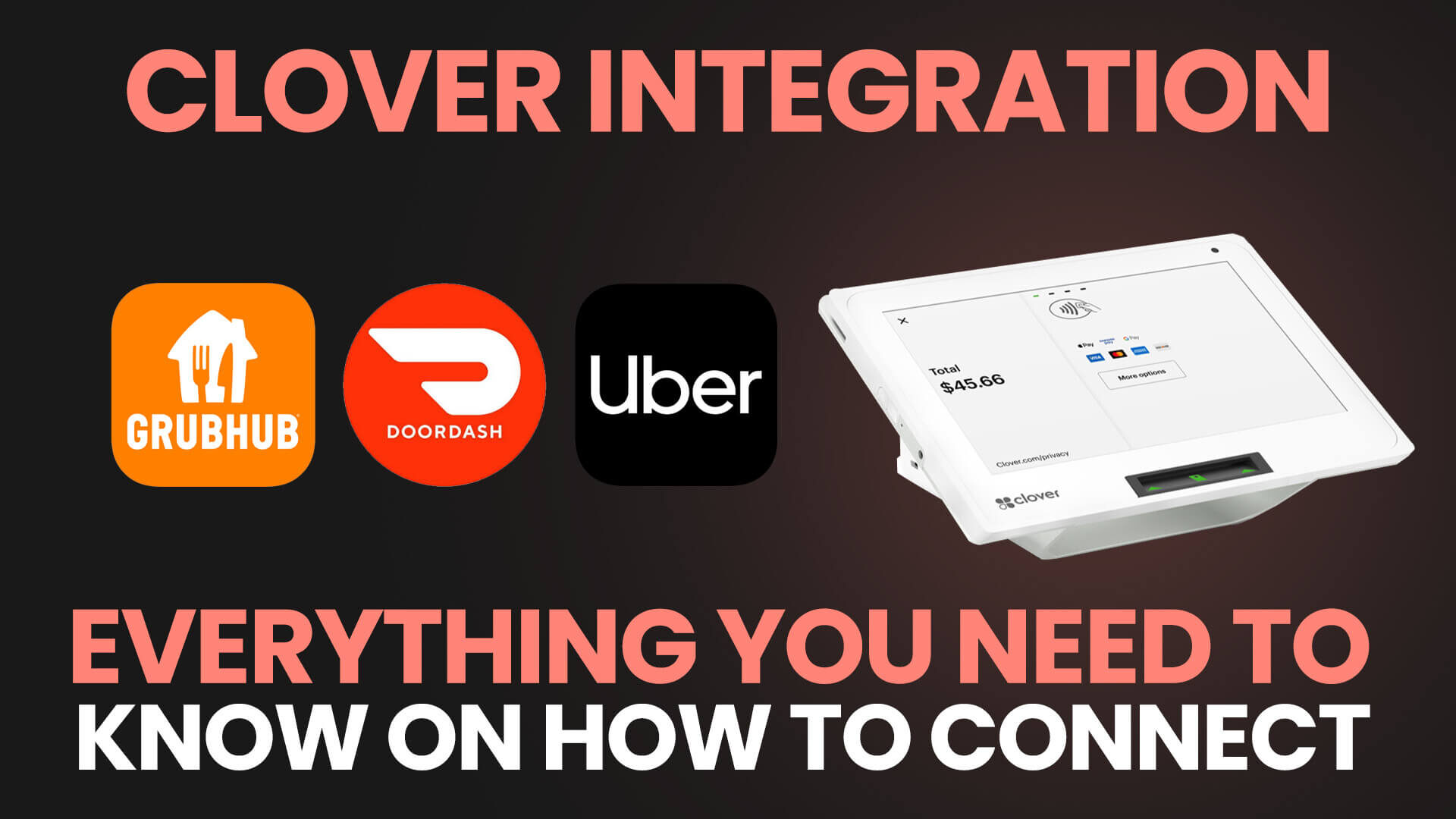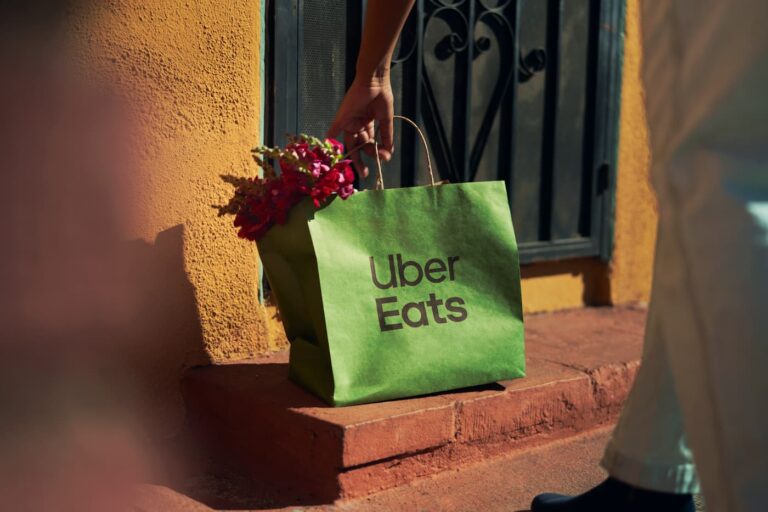Are you a restaurant owner looking to streamline your delivery operations? If so, a Clover integration is probably relevant to you. Actually, unlocking the power of a solid integration could be the game-changer you need.
In today’s digital age, customers have a plethora of food delivery options, with Uber Eats, GrubHub, DoorDash, and Slice leading the pack. But how can you seamlessly connect these popular delivery platforms into your Clover system? This article will guide you through the process, helping you maximize efficiency and ensure a smooth customer experience.
By integrating these third party ordering and delivery platforms into your Clover system, you can consolidate all your orders in one place. This saves time and reduces the risk of errors. With a few simple steps, you can synchronize your menu, receive and manage orders, and even track deliveries, all from your Clover device. Let us guide you in this journey geared with our experience as your reliable point of sale provider. Let’s discuss all things Clover integration!
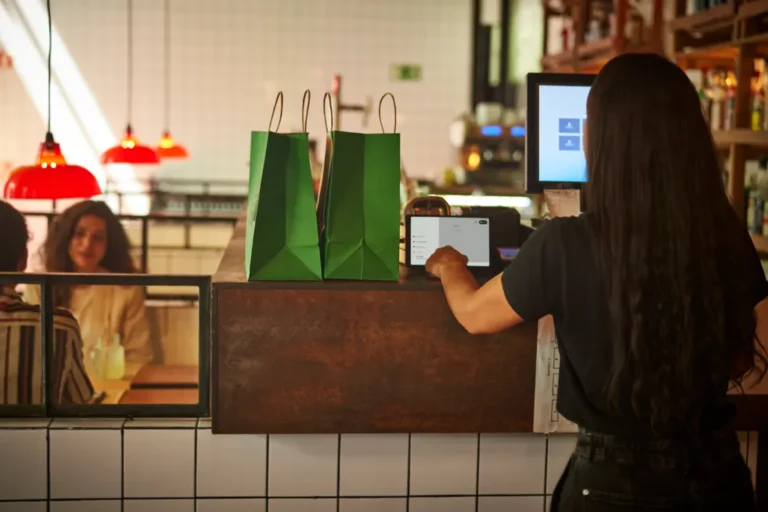
The Benefits of Integrating Uber, GrubHub, DoorDash, and Slice into Clover
Integrating Uber Eats, GrubHub, DoorDash, and Slice into your Clover system offers numerous benefits for your restaurant. Firstly, it allows you to consolidate all your delivery orders in one place. Instead of having to manage multiple tablets or devices for each platform, you can receive and manage orders directly from your Clover device. This not only saves time but also reduces the risk of errors that can occur when manually transferring orders.
Furthermore, integration streamlines your operations and increases efficiency. With all your orders in one system, you can easily track and manage them without switching between different platforms. This simplifies the order fulfillment process, ensuring that your customers receive their meals promptly. Additionally, clover integration enables you to automate certain tasks, such as updating inventory levels and generating reports, saving you valuable time and resources.
Lastly, integrating these popular delivery platforms can enhance the customer experience. By having your menu synchronized across all platforms, customers can easily find your restaurant and browse your offerings. This consistency in menu presentation helps build trust and loyalty among your customers. Moreover, integration allows for real-time updates on order status and delivery tracking, providing transparency and peace of mind to your customers.
How Clover Integrations streamline operations and increase efficiency
Integrating Uber Eats, GrubHub, DoorDash, and Slice into your Clover system streamlines your restaurant’s operations and boosts efficiency. Gone are the days of manually inputting orders from different tablets or devices into your POS system. With integration, all incoming orders from these delivery platforms are automatically synced with your Clover device.
This seamless integration eliminates the need for manual data entry, reducing the risk of errors and saving precious time. Orders are instantly reflected in your Clover system, ensuring that you can start preparing them without delay. This not only speeds up the order fulfillment process but also minimizes the chances of mistakes or missing orders.
Furthermore, integration allows you to manage your menu effortlessly across all platforms. Any changes or updates you make to your menu in the Clover system will automatically be reflected on each platform. This synchronization ensures that customers see the most up-to-date menu items and prices, eliminating any confusion or discrepancies.
Moreover, integration enables you to generate comprehensive reports and analytics. By having all your delivery orders in one system, you can easily track sales, monitor order trends, and analyze customer preferences. These insights empower you to make data-driven decisions, optimize your menu, and tailor your offerings to meet customer demands.
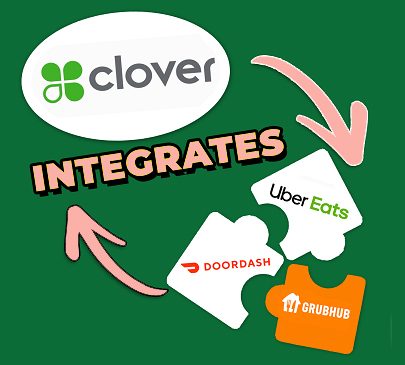
Step-by-step guide to integrating Uber, GrubHub, DoorDash, and Slice into your Clover system:
Integrating Uber Eats, GrubHub, DoorDash, and Slice into your Clover system may sound daunting, but it’s actually a straightforward process.
Here’s a step-by-step guide to help you seamlessly connect these delivery platforms with your Clover device.
Log in to www.Clover.com or www.Clover.com/Dashboard
From there you will want to click on Account & Set Up. If you are on the new dashboard you’ll click on the gear at the top right and then select View All Settings. Then, click on Online Ordering.
Choose the Right Integration Partners:
Research and select the integration solution that best suits your restaurant’s needs. There are several third-party integration providers available that are able to connect your delivery platforms to your Clover system. You’ll simply click on Get Started next to the partner you’re looking to connect into. Each partner is different but Clover, Google, UberEats, and Slice connect instantly. For UberEats you’ll need to use the merchant bridge and must need to know your Uber username and password. The link can be found here: https://ubereatsmerchantbridge.com/#/main/login?brand=clover
Slice you’ll need to download the Slice app on a Clover device and then just hit connect. Any issues contact their support, they are very helpful!
GrubHub you’ll just need to know your GrubHub website link, easily found by Googling it and DoorDash should auto-connect.
Things to Know:
Once you are integrated, your menu will now show what is on your POS (Clover). If you’d like to adjust what items are available you’ll need to go back to the Online Ordering section on Clover and then click on Settings and scroll down and then select Online Menus.
When Does The Menu Get Updated?
Your menu gets updated instantly on Clover’s native online ordering website they build for you as well as Google. However, DoorDash, GrubHub, UberEats, and Slice scrape the menu, meaning check for updates everyday at 3AM EST. This will ensure that your menu is synchronized across all platforms. This involves mapping your menu items, prices, and modifiers in the integration provider’s dashboard.
Configure Clovers Printers:
You’ll need to go on the Clover you want the expo ticket to print at and make sure the Station printer is added as an order printer. Then, log in as a manager or admin and click on Set Up then Online Ordering and make sure you set up the Remote Firing Device as This Device as well as the Remote Firing Printers and ensure that both section 1 and section 2 are checked on.
Test the integration:
Before going live, conduct thorough testing to ensure that orders are correctly transmitted from the delivery platforms to your Clover device. Place test orders and verify that they appear in your Clover system accurately.
Train your staff:
Once the integration is up and running, train your staff on how to manage orders through the Clover system. Familiarize them with the new workflow and ensure they understand how to handle orders from each company.
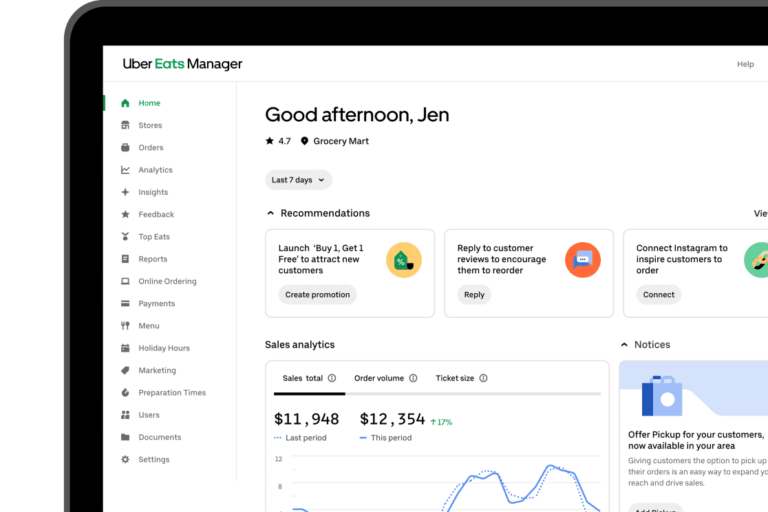
Common challenges and solutions when performing a Clover integration with delivery platforms
While integrating Uber Eats, GrubHub, DoorDash, and Slice with your Clover system offers numerous benefits, it’s important to be aware of potential challenges that may arise.
Here are some common challenges and their solutions:
- Menu inconsistency: Inconsistencies in menu items, prices, or modifiers across platforms can confuse customers and lead to errors. To overcome this, regularly review and update your menu in the Clover system, ensuring that it is synchronized with all delivery platforms.
- Order delays or failures: Occasionally, orders may experience delays or fail to transmit from the delivery platforms to your Clover device. To mitigate this, ensure that your internet connection is stable, and regularly check for software updates or patches provided by your integration provider.
- Managing high order volumes: During peak hours, managing a high volume of orders from multiple platforms can be challenging. Consider implementing order management tools or hiring additional staff during busy periods to ensure timely order fulfillment.
- Customer support: Providing efficient customer support across multiple delivery platforms can be demanding. Consider using a centralized customer support solution or assigning dedicated staff to handle customer queries and concerns.
By anticipating and addressing these challenges, you can ensure a smooth Clover integration process and optimize your delivery operations for success.
Best practices for managing multiple delivery platforms through Clover
Managing multiple delivery platforms through your Clover system requires careful planning and organization.
To make the most of this integration, consider implementing the following best practices.
Monitor performance:
Regularly review and analyze the performance of each delivery platform. Identify which platforms generate the most orders and revenue, and focus on optimizing your offerings and marketing efforts accordingly.
Optimize menu for delivery:
Fine-tune your menu to ensure that it translates well to the delivery experience. Consider offering delivery-specific items or packaging options that maintain the quality and taste of your food during transit.
Streamline order management:
Train your staff to efficiently manage orders coming from different platforms through the Clover system. Establish clear protocols for accepting, preparing, and dispatching orders to ensure a smooth workflow.
Maintain consistent branding:
Ensure that your branding, including logos, packaging, and promotional materials, remains consistent across all platforms. This consistency helps build brand recognition and reinforces customer loyalty.
Leverage customer data:
Capitalize on the data generated by the Clover integration to gain insights into customer preferences, order trends, and demographics. Utilize this information to tailor your offerings and marketing strategies for optimal results.
By implementing these best practices, you can effectively manage multiple delivery platforms through your Clover system, providing a seamless and satisfying experience for both your staff and customers.
Case studies: success stories of businesses that have integrated UberEats, GrubHub, DoorDash, and Slice with Clover
To inspire you further, let’s explore a couple of success stories from businesses that have performed a successful Clover integration with their system.
Case Study 1: Joe’s Pizzeria
Joe’s Pizzeria, a popular pizza joint, struggled with managing orders from multiple delivery platforms. By integrating UberEats, GrubHub, DoorDash, and Slice into their Clover system, they were able to consolidate their orders, streamline their operations, and reduce errors.
The integration also allowed Joe’s Pizzeria to generate detailed reports and gain valuable insights into customer preferences. As a result, they optimized their menu, improved order accuracy, and increased customer satisfaction.
Case Study 2: Le Che Bistro
Le Che Bistro, a trendy bistro known for its innovative cuisine, embraced Clover integration to enhance their delivery operations.
By seamlessly connecting these 3rd party companies with their Clover system, they were able to efficiently manage a high volume of orders during peak hours. This integration allowed Le Che Bistro to fulfill orders promptly, maintain consistent branding, and deliver exceptional customer service. As a result, they experienced a significant boost in sales and customer loyalty.
These success stories demonstrate the power of Clover integration in transforming delivery operations and driving business growth. By following their footsteps, you too can harness the benefits of integrating them into your Clover system, too!
Additional integrations to consider for your Clover system
While integrating Uber Eats, GrubHub, DoorDash, and Slice can greatly enhance your restaurant’s delivery operations, there are additional integrations you may want to consider to further optimize your Clover system.
Here are a few worth exploring:
- Online ordering systems: Connect your Clover system with online ordering platforms, such as ChowNow or Toast, to enable customers to place orders directly through your website or mobile app.
- Inventory management software: Integrate inventory management software, like MarketMan or Orderly, to automate inventory tracking, streamline purchasing, and reduce waste.
- Customer loyalty programs: Consider integrating customer loyalty platforms, such as Belly or LoyaltyPlant, to reward your customers and encourage repeat business.
- Table reservation systems: Connect your Clover system with table reservation platforms, like OpenTable or Resy, to streamline the reservation process and optimize table turnover.
By exploring these additional integrations, you can further enhance your restaurant’s operations, optimize efficiency, and deliver an exceptional experience to your customers.
Tips for maximizing the benefits of a Clover integration in your business
To maximize the benefits of integrating Uber Eats, GrubHub, DoorDash, and Slice into your Clover system, consider the following tips:
- Stay updated: Regularly update your Clover software and integration solutions to ensure compatibility and access the latest features and improvements.
- Train your staff: Provide comprehensive training to your staff on how to use the integrated system effectively. This includes understanding order routing, managing menu updates, and utilizing the reporting capabilities of your Clover system.
- Promote your online presence: Leverage your integration with delivery platforms to market your restaurant. Highlight your availability on each platform through your website, social media, and other marketing channels.
- Collect customer feedback: Encourage customers to provide feedback on their delivery experience. Use this feedback to improve your offerings, address any concerns, and continually enhance the customer experience.
- Monitor and optimize: Regularly monitor your performance metrics, such as order volumes, customer ratings, and delivery times. Identify areas for improvement and make data-driven adjustments to optimize your delivery operations.
By implementing these tips, you can maximize the benefits of integration, improve customer satisfaction, and drive the success of your restaurant’s delivery operations.
Conclusion on Clover Integration: The future of integration in the Clover system and how it can help your business thrive
As the demand for food delivery continues to grow, integrating Uber Eats, GrubHub, DoorDash, and Slice into your Clover system is becoming increasingly essential. By unlocking the power of integration, you can consolidate orders, streamline operations, and enhance the customer experience. The step-by-step guide provided in this article can help you seamlessly connect these popular delivery platforms with your Clover device.
Remember to anticipate and address common challenges, implement best practices, and explore additional integrations to further optimize your Clover system. By staying updated, training your staff, and collecting customer feedback, you can maximize the benefits of integration and position your restaurant for success in the competitive food delivery landscape.
The future of integration in the Clover system is promising. With advancements in technology and the growing demand for convenience, integrating various platforms and solutions will continue to evolve and offer new opportunities for restaurants. By embracing integration and harnessing its power, you can take your restaurant’s delivery operations to new heights and thrive in the digital age. Need further help with your point of sale? Contact us today!

